- General Waste: Waste created in the regular course of a day such as paper towels, paper mixing pads, empty food containers. General waste is nonhazardous and non-regulated.
- Does not pose any hazard to humans.
- Dispose of waste in a sturdy, covered trash receptacle.
- Contaminated Waste: Waste that has been in contact with blood, saliva, and/or other bodily fluid and includes patient napkins and used barriers.
- Generally does not pose a risk to humans and may be disposed of in the same manner as general waste.
- In cases in which the contaminated waste could potentially release blood or other potentially infected material (OPIM) such as in blood or saliva-saturated gauze or cotton rolls, it must be disposed of as medical waste and handled according to regulatory agency guidelines.
- Hazardous Waste: Including but not limited to waste that contains toxicity, including photo processing chemicals, extracted teeth with amalgam & cold sterile solutions.
- Poses risk to humans and the environment.
- Must be handled and disposed of according to regulatory agency guidelines
- Infectious Waste (Biohazardous): Contaminated waste that contains pathogens strong and numerous enough to cause infectious disease.
- Poses risk to humans
- Must be handled and disposed of according to regulatory agency guidelines.
- Medical Waste
- Extracted Teeth blood or saliva-soaked gauze & cotton rolls, human tissue from surgical procedures, etc., must be treated according to the Medical Waste Management Plan of California (Medical Waste Act of California).The proper disposal procedures for regulated waste will be covered in detail in the 4-hour practical session of this training.
- Contaminated Sharps –includes any device or object used that can puncture or lacerate the skin
- Dispose of in a puncture-resistant, leak proof sharps container that is properly labeled as Biohazard.
- Sharps containers have to be located where it is likely Sharps will be generated “as close to point of use as possible” (each operatory, sterilization area, and lab).
- Sharps safety is a serious matter; in order to reduce the risk of exposure, safe handling must be practiced. Recapping needles using the single-handed scoop technique, or an appropriate recapping device must be used. Placing sharps in the Sharps container as soon as possible reduces the risk of injury.
- Extracted Teeth blood or saliva-soaked gauze & cotton rolls, human tissue from surgical procedures, etc., must be treated according to the Medical Waste Management Plan of California (Medical Waste Act of California).The proper disposal procedures for regulated waste will be covered in detail in the 4-hour practical session of this training.
